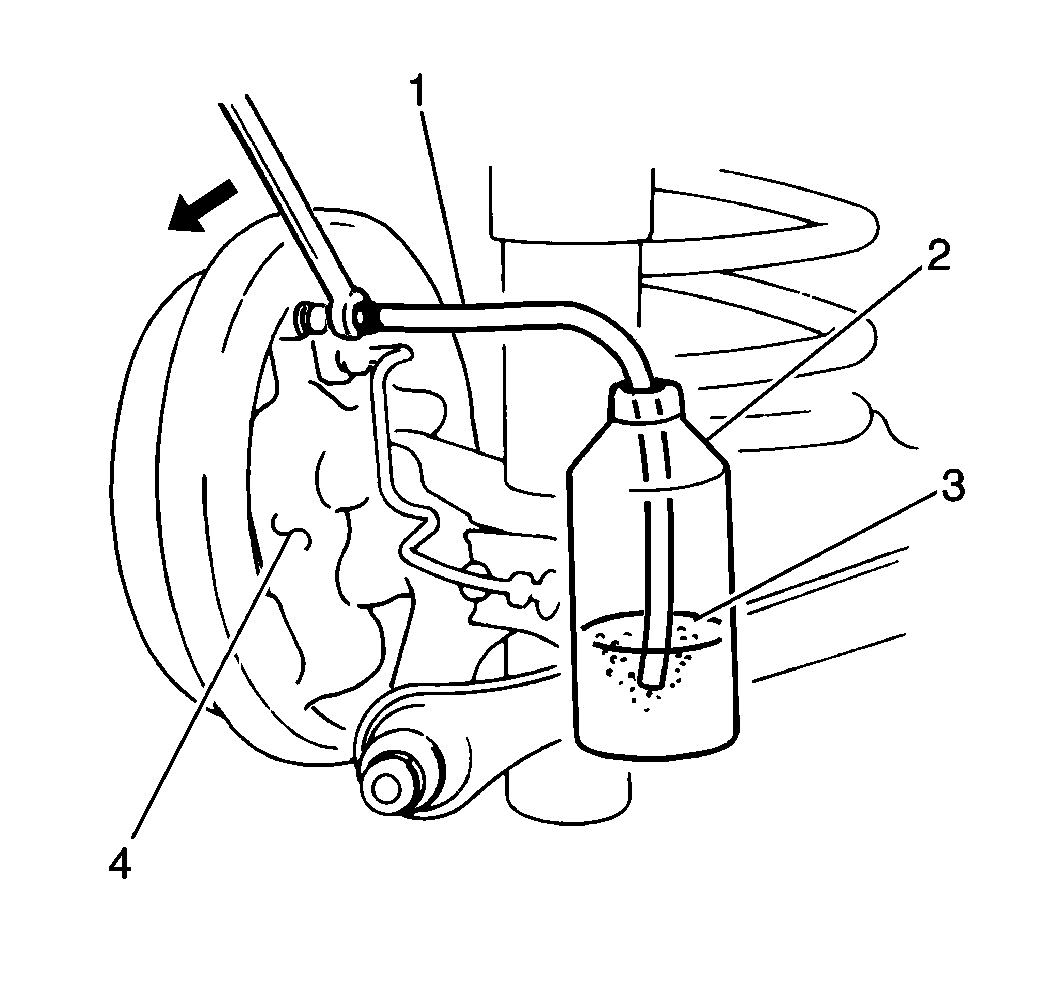Caution: Do not move the vehicle until a firm brake pedal is obtained. Air in the brake system can cause the loss of brakes with possible personal injury.
If air enters the brake fluid, bleed the brake system.
If air enters the master cylinder because of a low fluid level, bleed the brake system at all four wheels.
If you disconnect a brake pipe or a brake hose, bleed the brake system.
If you disconnect a brake pipe from the master cylinder, bleed the brake system at all four wheels.
If you disconnect a brake pipe or a brake hose at only one wheel, bleed the brake system at that wheel.
If you disconnect a brake system component, bleed the brake system at the wheels that the component serves.
Important: Bleed the brake system in the following sequence:
• The right rear wheel cylinder • The left rear wheel cylinder • The right front caliper • The left front caliper
- Verify that the engine is off. Push the brake pedal several times in order to remove the vacuum reserve.
- Verify that the reservoir is at least half-full. Fill the reservoir, if necessary. Refer to Master Cylinder Reservoir Filling .
- Remove the bleeder valve cap.
- Attach a clear plastic tube or a vinyl tube (1) to the bleeder valve. Submerge the other end of the tube in a clear container (2) that is partially filled with brake fluid.
- Instruct a second technician to press the brake pedal several times, and to hold the brake pedal completely pressed.
- With the brake pedal completely pressed, loosen the bleeder valve by one half turn. The brake pedal falls all the way to the floor when brake fluid flows out of the bleeder valve into the clear fluid container.
- Tighten the bleeder valve.
- Instruct the second technician to slowly release the pedal.
- Verify that the reservoir is at least half-full. Fill the reservoir, if necessary. Refer to Master Cylinder Reservoir Filling .
- Repeat this procedure until the air bubbles (3) do not appear in the clear fluid container (2).
- Install the bleeder valve cap.
- Repeat this procedure at all four wheels, if necessary.
- Verify that the reservoir is at least half-full. Fill the reservoir, if necessary. Refer to Master Cylinder Reservoir Filling .
- Pump the brake pedal.
- Inspect the brake pedal feel for sponginess. Repeat this procedure if sponginess exists.
- Verify that the BRAKE indicator lamp is off.
- Inspect the brake system for fluid leaks.

Notice: Use the correct fastener in the correct location. Replacement fasteners must be the correct part number for that application. Fasteners requiring replacement or fasteners requiring the use of thread locking compound or sealant are identified in the service procedure. Do not use paints, lubricants, or corrosion inhibitors on fasteners or fastener joint surfaces unless specified. These coatings affect fastener torque and joint clamping force and may damage the fastener. Use the correct tightening sequence and specifications when installing fasteners in order to avoid damage to parts and systems.
Tighten
Tighten the bleeder valve to 10 N·m (89 lb in).
